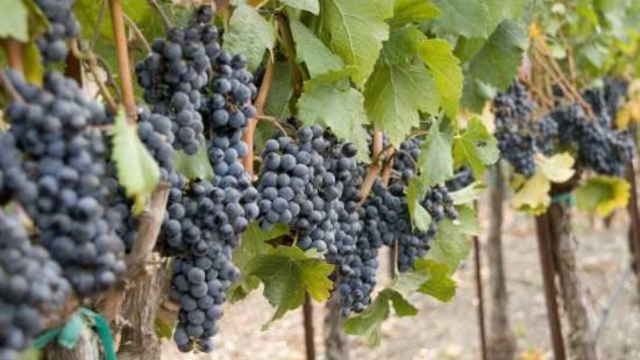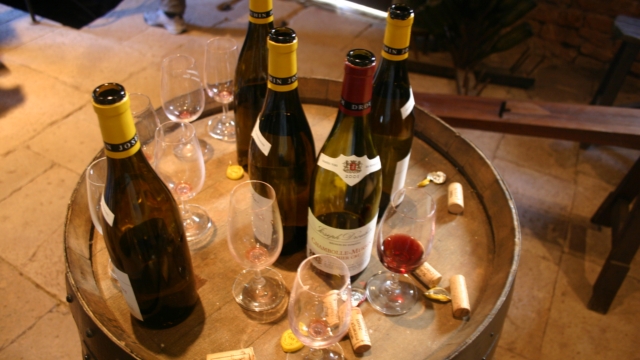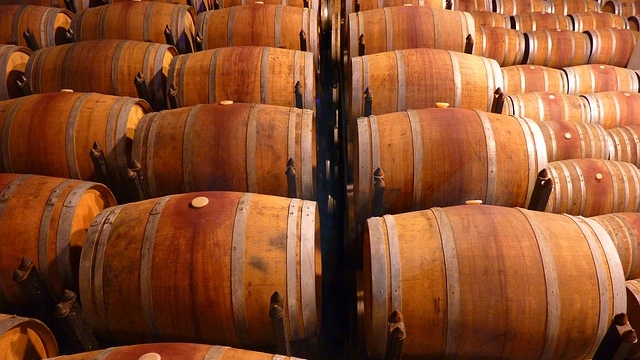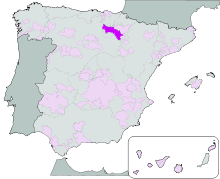That Useful Wine Site
Search, or just roll your cursor over the colored boxes farther below.click the “x” to dismiss Search-results block.




Advertisement:
Advertisement:
Quick page jumps:
(Synonyms: Bovale, Bovale Sardo, Bovaleddu, Cagliunari, Cagniulari, Cagnulari, Calareddhu, Calda Reio, Courouillade, Graciana, Minustellu, Monastrell Menudo, Monastrell Verdadero, Morastell, Morrastel, Moristell, Muristellu, Tinta Miúda, Tintilla de Rota, Xeres)

Graciano is a red-wine grape originating in the Rioja region of Spain. Spanish wines, like most Old World wines, are typically blends named for the region from which they spring. In Rioja wines, Graciano was usually a small percentage of the blend (though important, contributing structure and aging potential). Of late, its use had been fading, owing to the vines’ being quite low yielding.
(As the FringeWine blog puts it, “One might be inclined to think that Graciano has been relegated to blending grape status because it is an inferior grape. In fact, Oz Clarke says that it is ‘far and away the most interesting red vine in Rioja’, and Jancis Robinson writes ‘it is to the Riojanos’ shame that so little Graciano survives in their vineyards today.” If the wine is so good, then why, as recently as 1999, was vineyard acreage so low that the Spanish government was giving subsidies for planting Graciano in Rioja vineyards? The answer is that Graciano is notoriously low-yielding and susceptible to downy mildew, which means it needs more attention in the vineyards. It’s an economic decision that it’s hard to find fault with on a large scale.")
Recently, though, with wider recognition of the grape’s ability to produce powerfully aromatic wines of deep color and intense, distinctive flavor that age very well (Oz Clarke’s remarks on that notwithstanding), there has been an upsurge of interest, and bottlings that are dominantly Graciano or, not uncommonly, monovarietal have been appearing. Indeed, it is nowadays generally considered one of the dozen and a half or so of world-class red-wine grapes.
The vines thrive in warm, arid climates; there is now also some interest in the grape in the Lodi area of California, which seems well suited to it. It is also grown in Australia.
In Rioja, whence most Graciano yet, red wines are classified into one of four categories. In rising order of supposed quality, those are: Rioja, young wines; Crianza, wines aged at least two years, with at least one of those on oak; Rioja Reserva, aged at least three years, with at least one of those on oak; and Rioja Gran Reserva, aged at least two years on oak and at least three more in bottle. If that sounds like a lot, some bodegas (wineries) in times past would age their wines for 15 or even 20 years before releasing them. (Wikipedia cites “the Marqués de Murrieta which released its 1942 vintage gran reserva in 1983 after 41 years of aging.”)
Factoid: some say the grape’s name derives from the word gracia, meaning “joy” or “grace” (hence gracias); others say that because it is so difficult to grow well, growers offered cuttings habitually replied “No, gracias!”
For such a good-quality variety, there is a surprising dearth of it in the U.S. market (at least of decent quality at decent prices and reasonable availability). Here are the only ones we could identify.
• This wine’s Wine Searcher “Reviews” page.
• This wine’s CellarTracker review pages.
• Retail offers of this wine listed by Wine Searcher.
• Retail offers of this wine listed by 1000 Corks.
• This wine’s Wine Searcher “Reviews” page.
• This wine’s CellarTracker review pages.
• Retail offers of this wine listed by Wine Searcher.
• Retail offers of this wine listed by 1000 Corks.
• This wine’s Wine Searcher “Reviews” page.
• This wine’s CellarTracker review pages.
• Retail offers of this wine listed by Wine Searcher.
• Retail offers of this wine listed by 1000 Corks.
We found no Graciano better enough than those listed to justify any sort of “splurge” price.
Advertisement:
Advertisement:
|
|
This site is one of The Owlcroft Company family of web sites. Please click on the link (or the owl) to see a menu of our other diverse user-friendly, helpful sites. |
|
| (Note: All Owlcroft systems run on Ubuntu Linux and we heartily recommend it to everyone—click on the link for more information). | ||
|
All content copyright © 2024 The Owlcroft Company
(excepting quoted material, which is believed to be Fair Use). |
This web page is strictly compliant with the W3C (World Wide Web Consortium) Extensible HyperText Markup Language (XHTML) Protocol v1.0 (Transitional) and the W3C Cascading Style Sheets (CSS) Protocol v3 — because we care about interoperability. Click on the logos below to test us!
This page was last modified on Saturday, 30 October 2021, at 11:26 pm Pacific Time.
Some Descriptions of Graciano Wines
“The wine produced is characterized by its deep red color, strong aroma and ability to age well. Graciano thrives in warm, arid climates.”
“Typically the wines show deep purple robes with scents of violets, and black fruits, mint, spice and minerals on the palate. They often show best after a short stint in the cellar and have a good track record for aging. With certain wine critics extolling the virtues of these distinctive wines, an inquisitive wine-drinking public is taking notice.”
“[Graciano] produces wines of considerable weight, pigmentation, perfume and quality.”
“Straight Graciano wines tend to be big, soft and aromatic, sometimes a little too aromatic, but when done well they are very impressive rich wines.”
“Graciano wines are capable of rich color, a lovely fragrant BOUQUET, a hint of spice in the flavor, and long AGING. The high ACIDITY of the Graciano grape makes it a good candidate for blending with low-acid varieties like TEMPRANILLO.”
“The flavors of varietal Graciano wine are dark and concentrated, often showing licorice scents with a spicy element. It has high acid and medium tannins, making it an excellent complement to Tempranillo, its old partner. In practical terms it is often compared to Bordeaux’s Petit Verdot, in that Graciano is full of personality yet typically appears in wines only in single-figure percentages.”
“Graciano is a deep red grape of Spanish origin, mostly grown in the region of Rioja. As a wine, it is aromatic and ages well, but the grape requires a warm, dry climate to thrive.”
“This type of grape produces deep red wines with high acidity, which when young tend to be very tannic, harsh and rough, but experiencing a great aging development during the wood and bottle phase. Therefore, it is very common to find it in ‘coupages’ with a great variety of Tempranillo wines for wines with an aging process.”
“Deep dark purple to red, this is a graceful aromatic wine of mulberry, cherry and spice. The palate is fruit rich with a great length of acid and natural fruit sweetness.”
“‘This grape is like Marmite’, says Zubia; ‘you either love it or hate it.’ Good varietal examples show lovely colour, alcohol and acidity, a minty, spicy nose, and a minerality on the palate, balanced by inky dark fruits.”